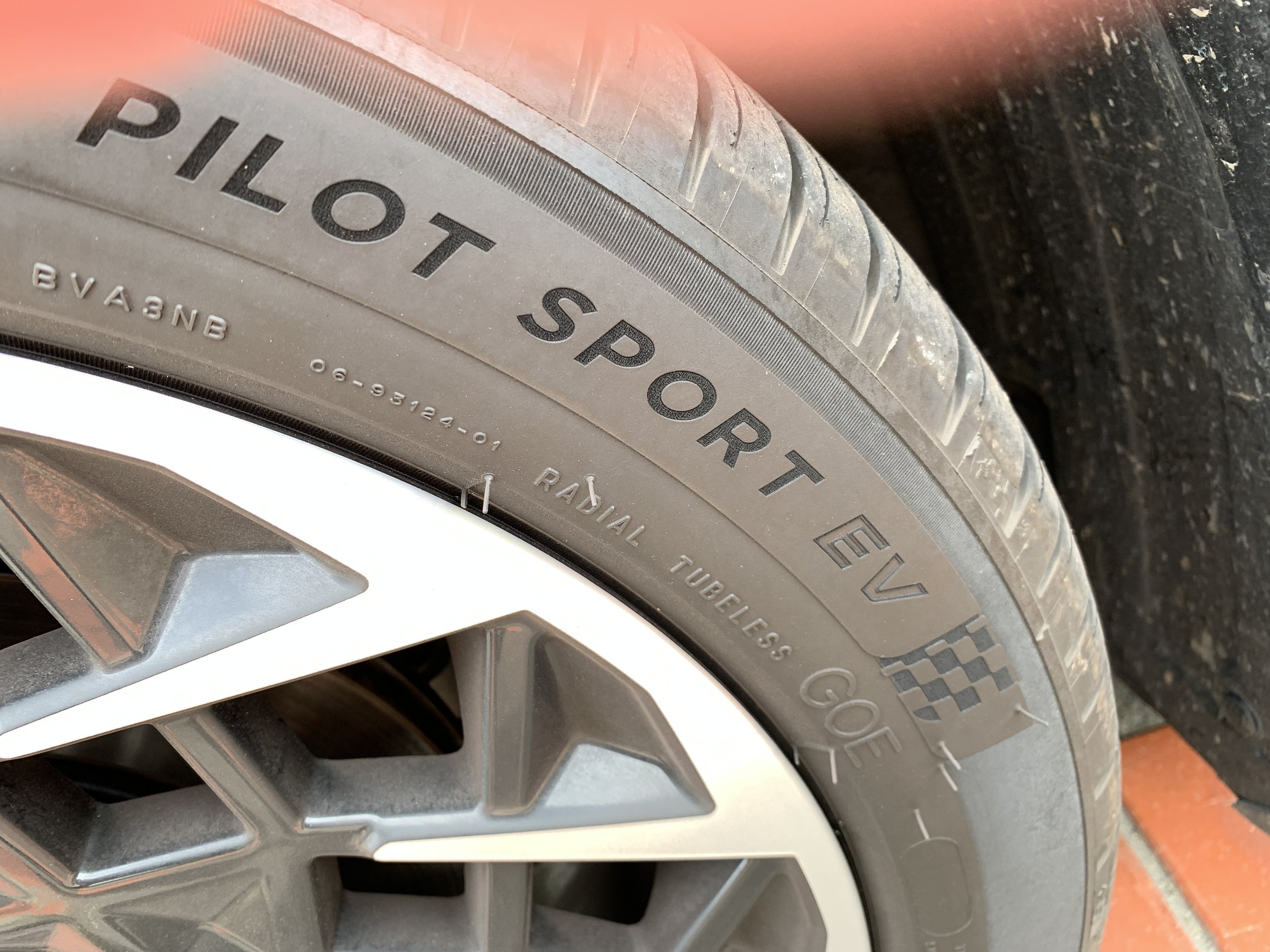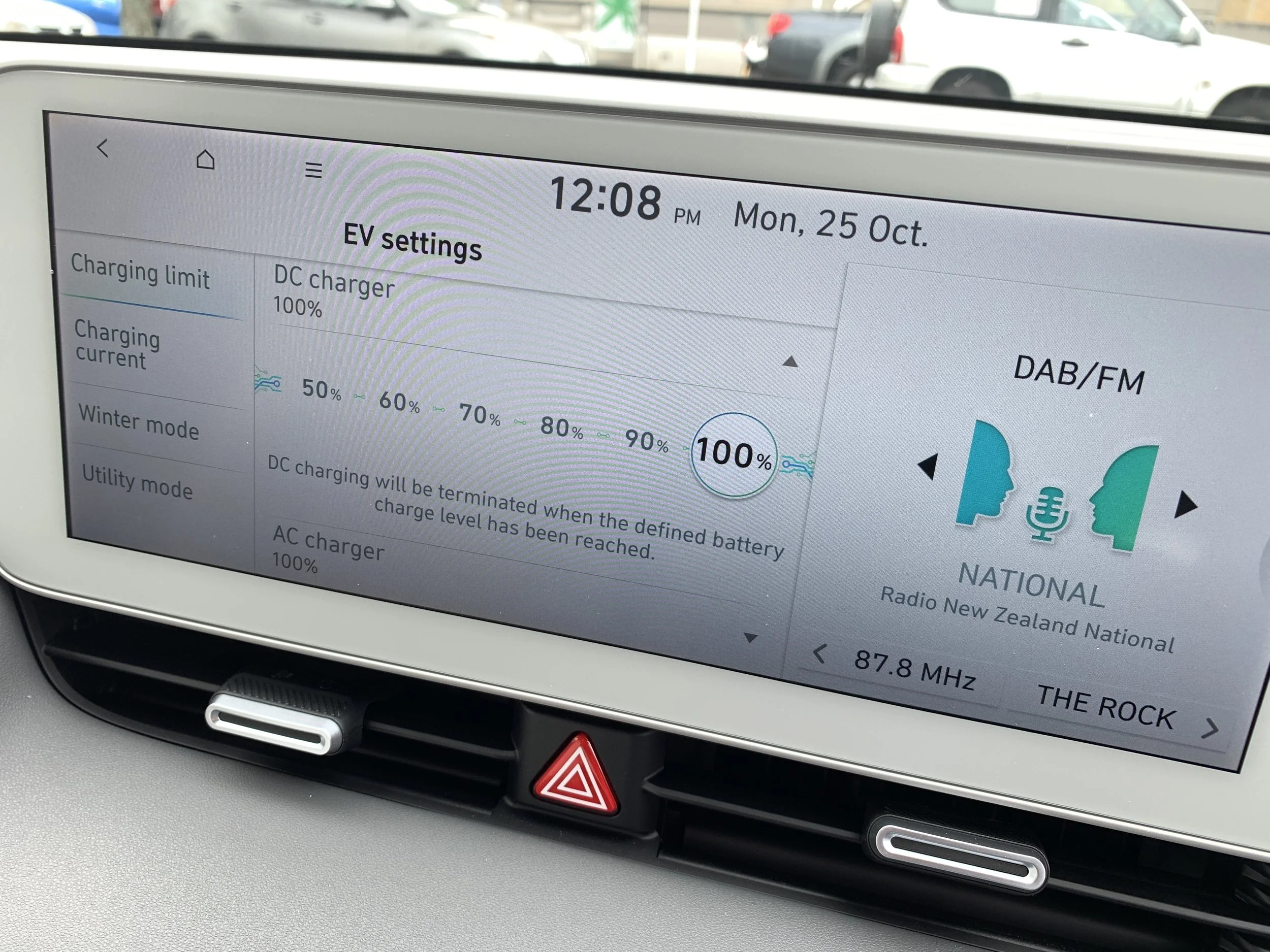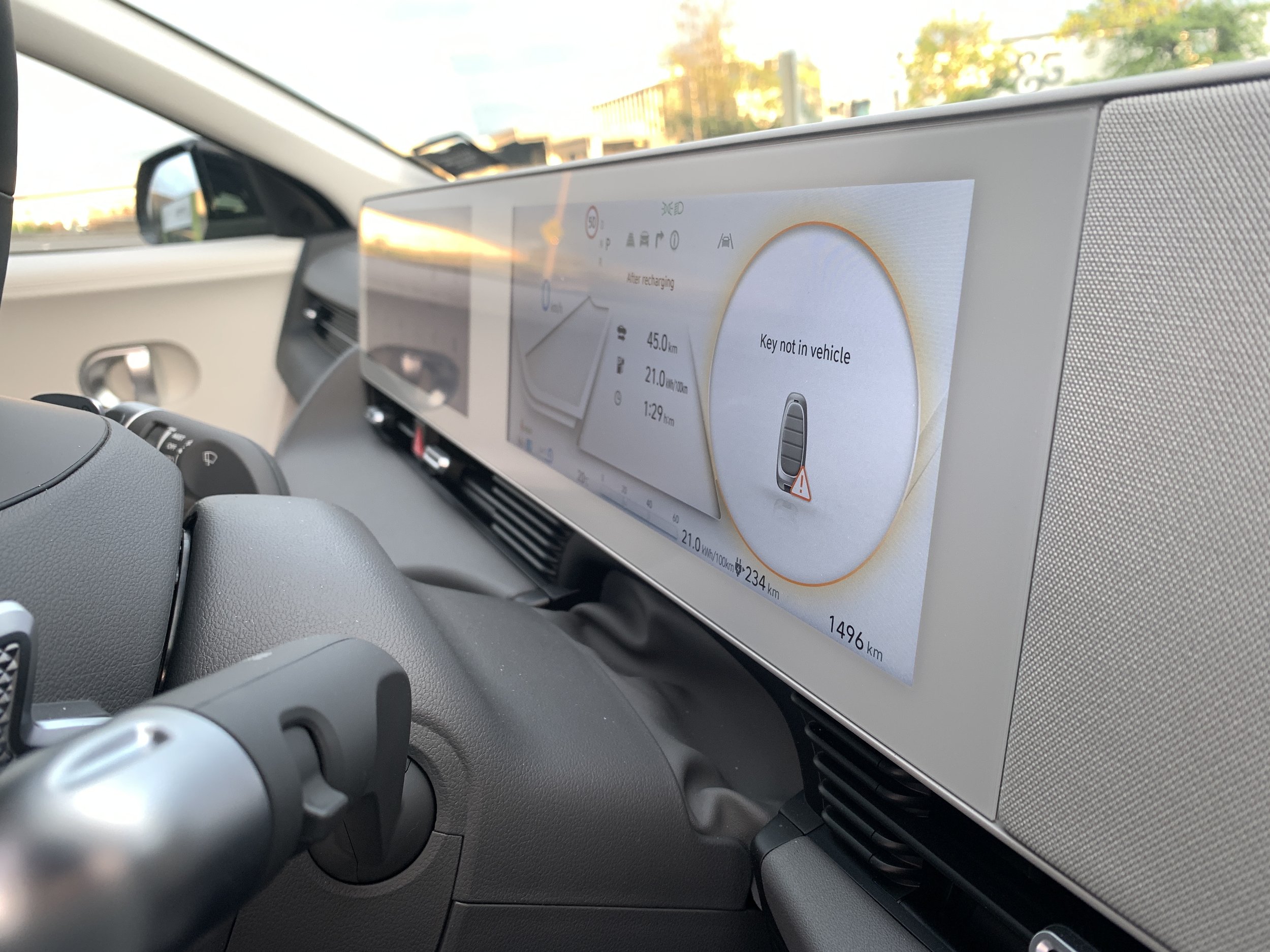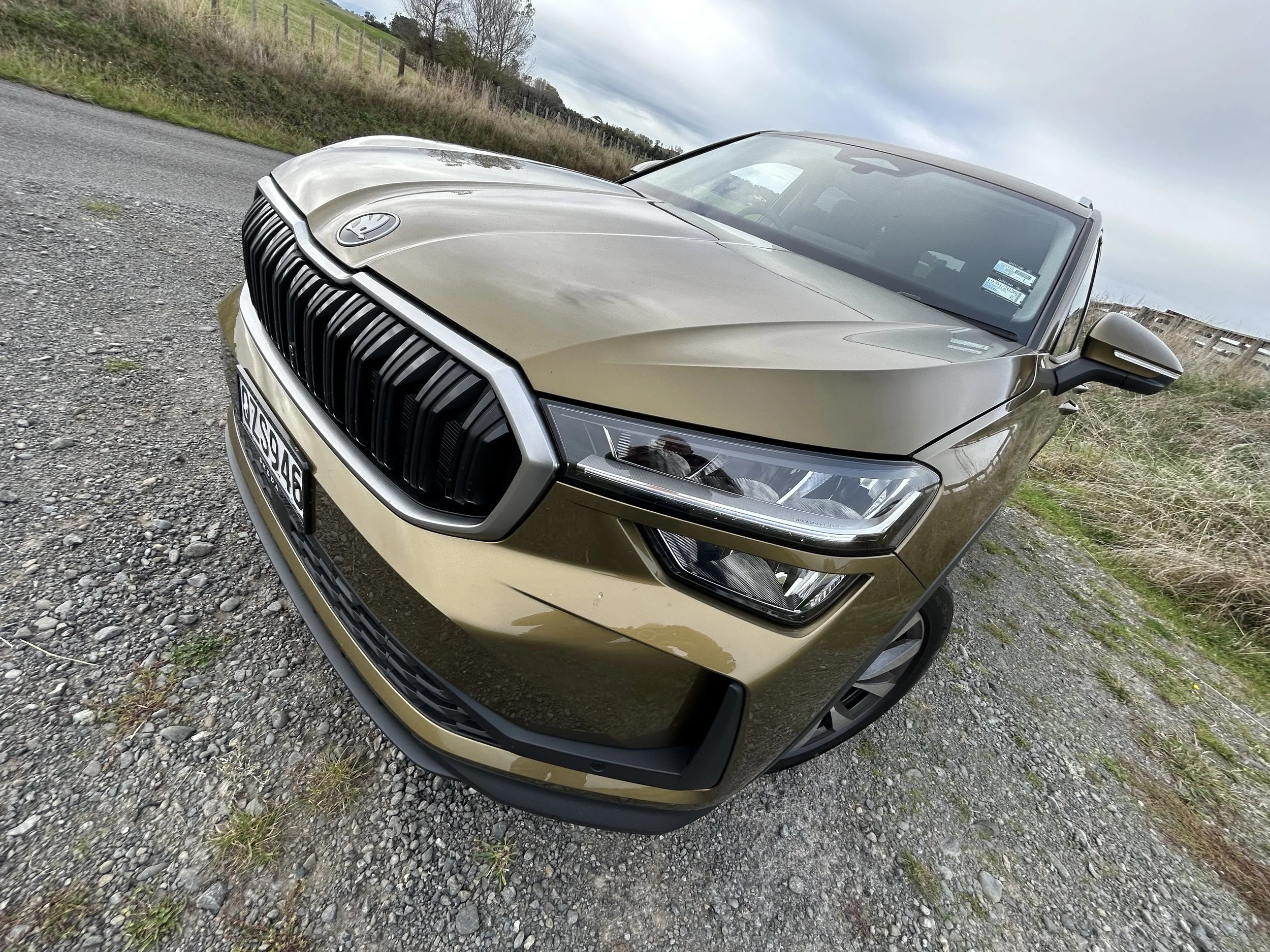Hyundai Ioniq 5 Limited review: Crowned joules
/The electric age is unavoidable. We need cars that deliver something special. The ‘Five’ doesn’t disappoint.
Price as tested: $112,000
Powertrain: Two permanent magnet synchronous electric motors (front and rear) and a 72.6kWh lithium-ion battery with 70kW/255Nm front and 155kW/350Nm rear, 19kWh/100km consumption, single speed automatic transmission, AWD.
Vital statistics: 4635mm long, 1605mm high, 1890mm wide, 3000mm wheelbase; luggage space 531/1600 litres (boot).
Likes: Pleasingly relaxing and easy to drive super hatch with some crossover potential, awesome front chairs, great use of recycled and eco materials in a spacious and airy interior, beautiful build quality.
Dislikes: Retro lines a bit awkward, not quite techy as it could have been, rear seat more couch-like in look than feel, Limited too expensive.
REMEMBER rock concerts? Yeah, thanks coronavirus, it’s been a while.
Anyway, imagine this scenario: The best band in the world is coming to town – you’re definitely going. One unresolved issue: How much to spend on the experience?
My wife is a huge Rolling Stones fan. She’s seen Mick and the boys three times; twice on general admission tickets. So, for the latest, we splashed on more premium seats.
That final concert was utterly fantastic. We were so close to the stage you could count the shirt buttons and hear the performers’ chat.
Still, if you ask Carol whether it was better than the previous shows, she’d be vexed to make a call. They were all brilliant.
I suspect much the same judgement might be made about the first model released under Hyundai’s Ioniq electric sub-brand.
If you feel this is the time to plug into the grid and leave the forecourt behind, then chances are the Ioniq 5 (for convenience sake, let’s hereafter call it the ‘Five’) stands excellent chance of being the electric that makes it very easy to say goodbye to petrol or diesel forever, especially if you buy the one that earns the Government’s rebate.
That’s not the test car. Go for a Limited and you’re buying into the equivalent of a platinum-plus ticket experience; it has a $30,000 premium over the Government EV rebate-eligible base edition more Kiwis are interested in.
Buy high and you achieve the best of everything. The biggest battery (72.6kWh), a dual motor drivetrain with the highest potency availed the type (so 155kW, 350Nm, 0-100kmh in 5.2 seconds). A single motor variant with this motor has 18km more range above this one’s WLTP-cited 462kms, but that one comes in a lower trim. If you want the optimal fit-out and tech, Limited is the go. The spec delivers absolutely everything Hyundai New Zealand could box tick, the tester adding the one option, a solar sunroof, there to keep the secondary (12v) battery pepped.
You know how some will say that EVs are now closing in fast in achieving price equality with petrol and diesel cars? Erm, not quite with this variant. All that content has a cost – in this instance one just $7k short of what you’ll spend on the most lavish version of the seven-seater Palisade sports utility.
Still, you don’t need to spend that much to get what this car is about. Regardless of powertrain/battery combination, all Ioniq 5s are really leading the charge.
The e-GMP platform is modern, delivering DC fast-charging with up to 80 percent replenishment under an hour with a sufficiently potent nozzle – so, better than the 50kW optimal charge points I used - and supporting dual-mode 400V/800V charging. Rely on the onboard AC charger intended for domestic use and, yup, it’s a slow coach, but overall it’s the smartest sub-premium here.
In terms of technology interplay, Hyundai is also equal opportunity, with all versions getting cabins trimmed with mainly recycled or environmentally-friendly materials and a 12.3-inch central touch-screen with built-in navigation and connected infotainment, along with Car Play and Android Auto if you prefer to use your phone apps. This is paired with a similarly sized digital instrument cluster for a widescreen effect similar to that on many Mercedes-Benz cars, with a similar slick, premium feel.
Love your gadgets? A newly-announced Tesla-trumping ace card is ability to support, providing you buy the somewhat pricy adapter, ‘Vehicle to Load’ (V2L), which means you can turn the charge port into a power source for charging electric bikes or whatever else you might want to run off a domestic style three-pin socket. It hasn’t the ability to another EV off it, but that’s coming.
The e-GMP project has been a gamble, because the investment is massive, yet the end result speaks to so much promise. Hyundai’s desire to out-do Japan Inc evidences extremely well with this new car. Simply put, the Five is eons ahead of anything yet to be produced by Toyota, Nissan and Mitsubishi, the makes that lead Japan’s electric push.
The hatch crossover styling pitch probably makes it a better concept than the obvious immediate rival, Tesla’s Model 3, which though extremely price competitive has also been around since 2017 and isn’t as high-tech.
“More regal than outright rapid; and very refined.” That’s how the test notes summed up this model.
Don’t read that wrong; the twin-motor set-up allows sharp step-off and it achieves a definably snappy edge when in the Sport mode, achieved by a Porsche-style steering wheel-mounted push button control. Also the electronic control systems work cleanly to deliver drama-free traction and it has Michelin Pilot Sport rubber, which generally only reserves for sporty cars.
And yet … well, ultimately, the car doesn’t define itself as being particularly pacey. Like all EVs, it cannot quite shake off its considerable kerb weight. Beyond that, though, the suspension tuning itself isn’t really keen on entertaining full-out decisive driving machine and, when you read the fineprint on the tyre walls, it’s patent these Pilots are not the track-suited type but instead are especially tailored for EVs. Which kinda explains why there’s a fair bit of squeal. I’m not saying the Five cannot be fun, but the Limited is more about cushiness than crushing speed records. Doubtless the variant to come from the N performance division will be much more rakish.
Better, then, to reserve Sport for demonstrating energised sprints and, for everyday driving, settle for the default Standard drive setting. The responses in this are more than adequate and the car as a whole simply feels more amiable and composed. There’s one more notch on the dial, and that’s ‘eco’, which also gets best Green intent, with inevitable consequence. While not blunting the edge completely, it nonetheless makes the car feel quite dull. Clearly, it’s best reserved for low battery scenarios.
No matter the setting, what appeals hugely is the massive refinement. At 100kmh there’s a rumble from the road – because, well, coarse chip – but otherwise only a touch of wind noise from the A-pillars (or maybe the mirror housings) might distract. To give an idea of how well-insulated it is from even that extraneous noise, you will find yourself having to converse no more loudly at 100kmh than at around-town speed.
As is typical of the breed, there’s energy regeneration, also adjusted from the steering wheel, the i-Pedal setting giving you ‘one-pedal’ driving where you can slow to a halt just by lifting off the accelerator. This is better around town than on the open road, but you can check out the benefits on the displays.
As for the other key ‘R’ word? I’d need more time in the car to get a fully accurate handle on how accurate its range prediction will be in all circumstances, but first impressions suggest it does pretty well. You should be able to plan your journeys and charge stops accordingly. Expect the latter to take a while, though if you’re in a 50kW-max environment. If you have access to a 350kW rapid charger, go for it. You’ll get a 10-80 percent charge in less than 20 minutes.
The design? One of the great advantages of EV architectures is freedom to do anything. In this case, it’s to move forward by looking back. Enveloping a very modern cabin in which the ethic of few button and control minimalism in favour of touch and swipe screen proficiency stands out, with a retro-modern body shape asks for explanation unless you’re a student of early Korean cars.
No? Okay, so it goes like this … the square-cut geometry with its wedge nose, blunt rear, pixel-shaped lights and short overhangs references the Pony coupe, a 1974 cheapie penned by Giorgetto Giugiaro, an especially famous stylist of that time. As the first Hyundai developed in-house and first export product (nerd fact: Ecuador was the first destination, in exchange for bananas), it has high in-house status.
All good if you’re into that. Whether international markets will be as excited by this homage as the home crowd has to be highly debatable. I mean, who – aside from me – even remembers the Pony being on sale here and, more importantly, who recalls it as being a particularly influential design (certainly, I suggest it’s not up with a true Giugiaro banger, the first Golf)?
Admittedly, even if you don’t find it outright attractive, the ‘Five’ does do a brilliant job of attracting attention to itself, which is maybe the real point of this exercise.
It’s not just the look but the car’s sheer size. It can be hard to judge from photographs, but this is actually a really big car; much less a pony than a Clydesdale. Just 100mm shorter of the Santa Fe seven-seater and something of a lane-filler. Taller than you imagine, too - no real ducking down even for my lanky frame. That’s why the Limited can stand riding on 21-inch wheels, a hoop size otherwise restricted to the make’s big SUVs.
All this reinforces that e-GMP brings a dimensional typicality common to all bespoke EV underpinnings, but at least Hyundai plays that aspect to positivity by delivering a three-metre wheelbase – the space between the front and rear wheels – that not only has positives on the ride but also interior space. This car is huge in the way I remember a mate’s dad’s Falcon 500 sedan was back when I was a youngster.
Rear seat legroom is so decent that even with a person of my 1.8m height driving driving, a passenger of equal size can sit behind and really stretch out. Head room isn’t quite as plentiful as with, say, a Santa Fe, but it’s hardly enclosing; especially with the full-length panoramic glass roof that you can chose if the solar glass top seems a touch unnecessary.
There’s enough space to play with to allow the Limited to have the extravagance of an electric motor-driven fore-aft adjust on the seat bases. So very ‘executive’, right? A shame the rear seat shaping isn’t. Different story up front, though.
The driver and co-pilot chairs really are five-star; of such clean minimalism, functionality and beauty you’d think they’d been crafted by a high-end Scandinavian furniture maker. An impression accentuated all the more by the test example’s cabin being finished in an off-white and light grey interior trim.
At this level you can recline the front seats to be almost fully flat, and they incorporate a leg rest that extends as you recline to give you the full first class (or dentist chair) experience. A position that leaves occupants in repose pretty much below the window line potentially requires consideration of when and where to try it. Potentially not, as I did, when charging the car in town. A bloke checking out the car got quite the shock when realising someone was inside. The rear seats also recline, but not to the same extent as the fronts.
The flat floor means tons of footwell space to, and there’s a nifty sliding centre console between the front seats so you can configure the interior space as you like. Boot space is considerable, too, though the load area is shallow. It has enough underfloor space to stow a charging cable and storage under its bonnet, though the latter is far more nominal in the all-wheel-drive version than the rear-drive. Long doors help access to both front and back, but you have to think hard about how you park it; they swing out quite a way.
Trim options get progressively fancier, this top level spec achieving leather upholstery that, though plush, I’m not sure is preferable to the cheaper cars’ organic materials. That’s not a ‘save-the-cows’ sentiment (I’m a steak eater). I just like the cloth.
Safety tech is a big part of this offer. The car having been awarded a five-star ANCAP shows it’s well up to snuff in crash testing. You’re well covered for driver assistance systems, including automatic emergency braking that kicks in if you don’t spot pedestrians or cyclists unaware of its presence – as they might be because, though really big, it is even with the usual low-speed warble warning sound, very quiet on its feet – and also hauls up the car if you’ve started off from an intersection and it decides oncoming traffic is too close for comfort.
That and blind spot collision assist, with camera view in the instrument binnacle when you put the indicators on, are nanny features I didn’t mind given visibility isn’t all that great. It also uses cameras and radar to keep you in the lane – a system you might deactivate as it is a little too forceful - and, with the active cruise is enable, a safe distance from the car in front.
As much as the Limited would seem to have everything, it actually hasn’t. The of a head-up display is a bit weird. Cars is this cost bracket also tend to deliver with wireless CarPlay (or Android Auto) as well as an inductive recharge pad, but here not only does it ask for tethered involvement but also provisions with US-B rather than the more in-vogue US-C ports. The one enabling those phone apps is deep at the base of the console – so, basically at foot level. It’s almost as if they hope you won’t use it.
The native sat nav includes ability to show local charging points, but the dataset needs updating. I failed in fathoming how to save the locations of local charging places as favourite settings, so had to put up with it consistently ignoring those in favour of a couple in other towns, much further away. As in other Hyundai cars, the sat nav also alerts to long defunct speed camera locations.
The last irks are potentially a very personal thing. The design per se of the gear selector, a stubby stalk on the right side of the steering column, is brilliant. But twisting this downward for Reverse, up for Drive, consistently screwed with my brain. For some reason those movements seemed the ‘wrong’ way around. Also, why do EVs all have the charging input on the right hand side, which is the ‘wrong’ side for charging off the ChargeNet DC input. At least, that’s how I see it - in that, if you park the car in a bay on the charger unit’s DC side, the cable won’t reach. So, you find yourself park in the other bay (on the AC side) and bringing the cable across. SEe the photo below.
All the same, surely there’s nothing here that anyone could find impossible to live with. I’m happy to admit that this was one of the cars I was most looking forward to experiencing this year and would say, too, that it was among a relative few I was genuinely sad to say goodbye to.
The electric age is unavoidable. We need cars that deliver something special. On those grounds, the ‘Five’ doesn’t disappoint in any way.
While the Limited specification in its own right is something of a deep breath acceptance, the car in its own right surely stands as one of those EVs that will have no trouble finding owners who are motivated by its intriguing design, advanced tech, practical range, sense of ‘dare to be different’ cool and impressive build quality.
There’s also surely the reassurance of it having properly national sales and servicing from a manufacturer that clearly knows its way around the EV-sphere and will continue to bring more of this fare here over the next few years.
Hyundai and its Kia subsidiary have been at the forefront of producing well-built, practical electrified cars for some years, yet as genuinely decent as all those previous products have been, in light of what Hyundai has now produced with e-GMP, by comparison with what’s come now those forebears now stand as the equivalent of the demo tapes given to a producer in hope of a lucky break. Five is far more polished.
As a foundation for its maker’s future, Ioniq Five could surely be said to be as important to Hyundai as the Model T was to Ford, the Beetle to Volkswagen and the Prius to Toyota. It is a landmark car.
Consider also, this: When the first effort is this good, imagine what levels of quality and innovation bodes for the additional platform-sharing Hyundai, Kia and Genesis sister cars set to follow.
A single word summation? Stunning.




























